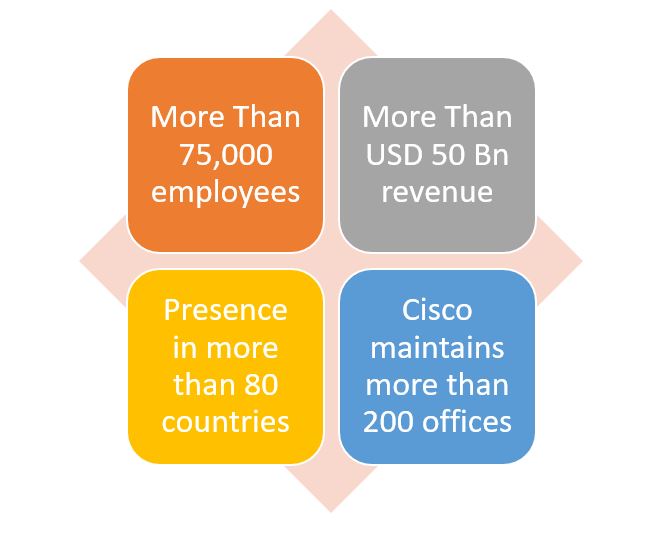Introduction:
The Global Telecommunications and Networking Market has witnessed unprecedented growth, driven by the increasing demand for advanced connectivity and communication solutions. Among the key players shaping this dynamic landscape, four stand out for their significant contributions and market influence. In this article, we delve into the strategies and offerings of Cisco Systems, Inc., Huawei Technologies Co., AT&T, and Verizon Communications, shedding light on their roles in shaping the future of telecommunications.
- Cisco Systems, Inc.: Pioneering Network Solutions Headquartered in San Jose, California, Cisco Systems, Inc. has established itself as a global leader in networking hardware, software, and telecommunications equipment. With a workforce exceeding 75,000 and a revenue surpassing USD 50 billion, Cisco remains at the forefront of innovation.
Cisco’s product portfolio spans a wide range of networking solutions, including routers, switches, security appliances, and collaboration tools. The company’s commitment to innovation is evident in its ongoing investments in research and development, accounting for approximately 13% of its revenue.
The impact of Cisco’s solutions is profound, with a global market share of around 51% in the enterprise network infrastructure market. Its emphasis on security, cloud computing, and the Internet of Things (IoT) positions Cisco as a crucial player in the evolving landscape of telecommunications.

- Huawei Technologies Co.: Redefining Connectivity Based in Shenzhen, China, Huawei Technologies Co. has emerged as a global giant in telecommunications equipment and services. With over 200,000 employees and revenue exceeding USD 120 billion, Huawei’s influence extends across more than 170 countries.
Huawei’s comprehensive product offerings include networking equipment, smartphones, cloud services, and enterprise solutions. Notably, the company has played a pivotal role in the development of 5G technology, contributing significantly to the global adoption of high-speed wireless connectivity.
Despite facing geopolitical challenges, Huawei’s commitment to research and development has propelled it to the forefront of technological advancements. Its focus on building a robust ecosystem through collaborations with telecom operators and industry partners solidifies its position as a key player in the telecommunications market.

- AT&T: Leading the Charge in Telecommunications A stalwart in the telecommunications industry, AT&T, headquartered in Dallas, Texas, boasts a workforce of over 230,000 and generates annual revenue surpassing USD 170 billion. With a history dating back to 1885, AT&T has been a driving force in shaping the telecommunications landscape in the United States.
AT&T’s dominance extends across various segments, including wireless communication, broadband services, and entertainment through its acquisition of Warner Media. The company’s investment in 5G infrastructure and expansion of fiber-optic networks underscores its commitment to delivering cutting-edge connectivity solutions.
As of 2022, AT&T claims a substantial share of the U.S. wireless market, serving millions of customers. Its strategic acquisitions and investments in network modernization position AT&T as a key player in the ongoing evolution of telecommunications services.

- Verizon Communications: A Force in Wireless Communication Verizon Communications, headquartered in New York City, stands as a major player in the telecommunications industry. With a workforce exceeding 130,000 and revenue surpassing USD 135 billion, Verizon is a force to be reckoned with in the U.S. and beyond.
Verizon’s focus on providing reliable wireless communication services, coupled with its commitment to expanding 5G networks, has solidified its position in the market. The company’s consumer and business-oriented solutions encompass wireless services, broadband, and IoT offerings.
In the competitive landscape of telecommunications and networking industry, Verizon’s customer-centric approach and continuous investment in network infrastructure have contributed to its widespread recognition. With an ever-expanding subscriber base, Verizon remains pivotal in shaping the future of wireless connectivity.

Telecommunications and Networking Market Insights:
According to industry reports, the global telecommunications market is poised for substantial growth, with a projected Compound Annual Growth Rate (CAGR) of approximately 6% from 2022 to 2028. Factors such as the increasing demand for high-speed internet, the proliferation of smart devices, and the advent of 5G technology are driving this expansion.
Cisco, Huawei, AT&T, and Verizon are expected to play crucial roles in this growth trajectory, with their technological innovations and strategic investments shaping the future of telecommunications and networking industry.
Conclusion:
The Telecommunications and Networking Market is witnessing a transformative era, and these four players are at the forefront, driving innovation, connectivity, and digital transformation on a global scale. As the demand for seamless communication continues to rise, the contributions of Cisco Systems, Huawei Technologies, AT&T, and Verizon Communications will undoubtedly shape the industry’s landscape for years to come.



